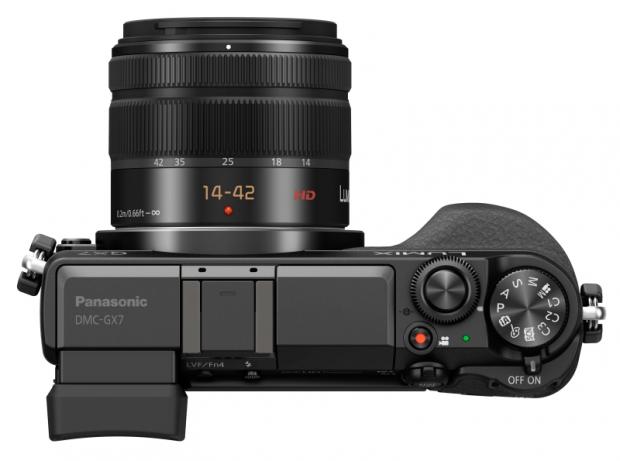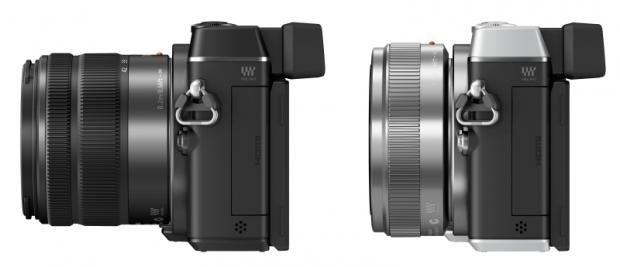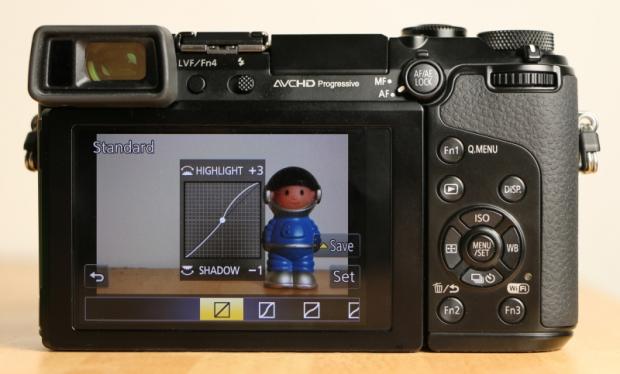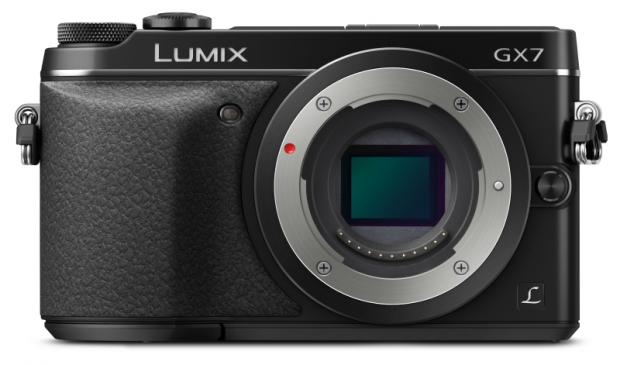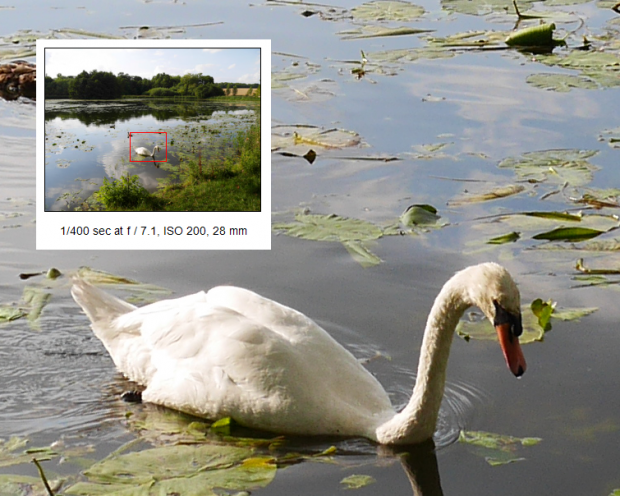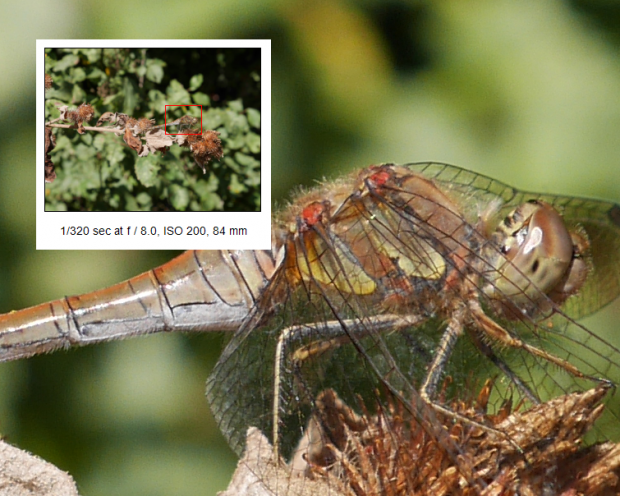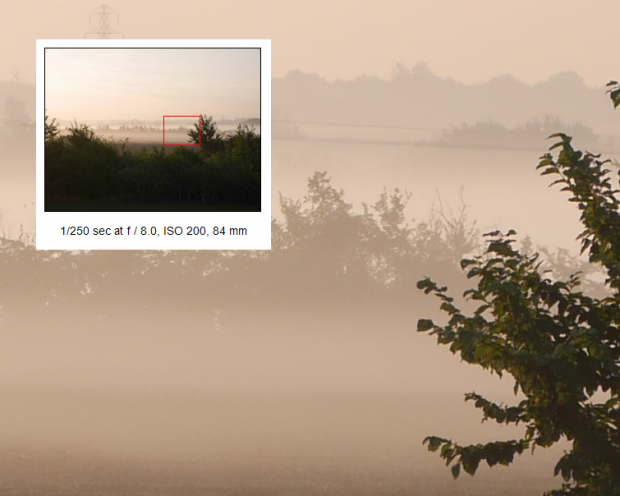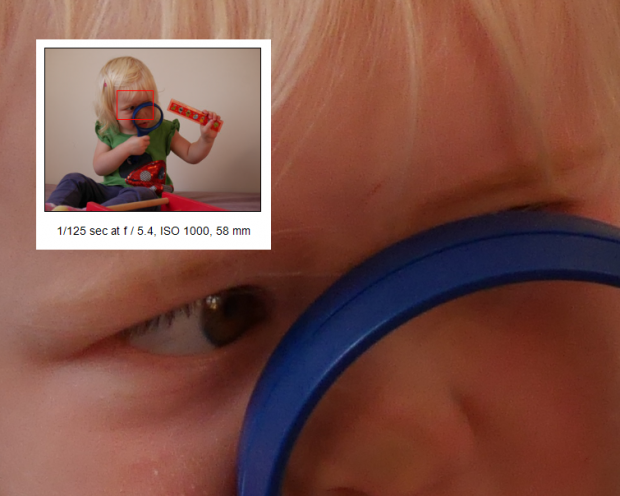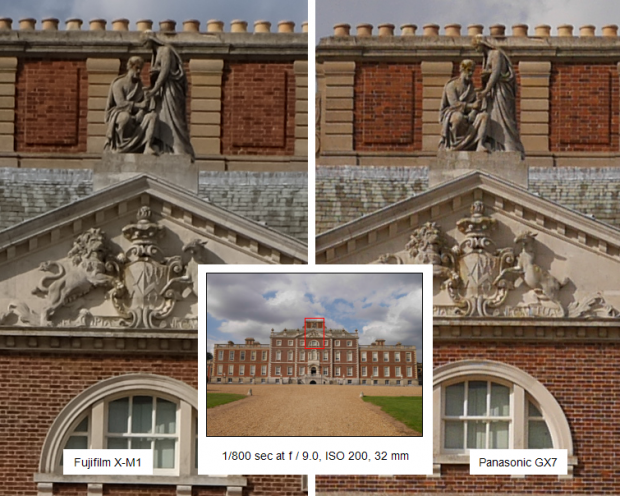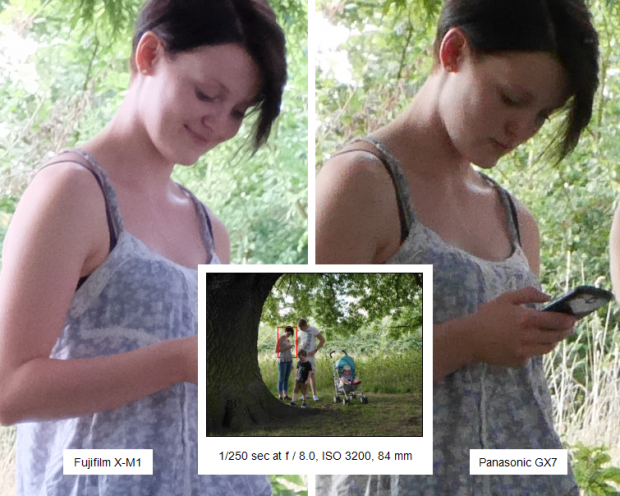Panasonic has enjoyed a straight run of five-star reviews for its current line-up of compact system cameras (CSCs), but the GX7 might just be the best of the bunch. It replaces the Panasonic Lumix DMC-GX1 with a slim, rangefinder-style design and enthusiast-friendly controls. It’s more expensive than the GX1 was at launch, but it’s also significantly better specified.
The big news is an integrated tilting electronic viewfinder (EVF), which was only available as an expensive and slightly cumbersome add-on unit for the GX1. Optical stabilisation is built into the sensor, so it’ll work with any lens. The LCD touchscreen is sharper and tilts up and down. There are dual command dials for direct access to exposure settings, a dedicated auto/manual focus switch and Wi-Fi with NFC for wireless transfers and remote control.
It’s also the most handsome camera Panasonic has built in a long time. It may not have the retro chic of Olympus Pen and Fujifilm X cameras, but the magnesium alloy body looks and feels like a serious piece of kit – whether you opt for the all-black model or the retro-inspired silver finish. The 14-42mm kit lens is a little bulkier than the GX1’s motorised zoom lens, but it’s still remarkably small and an excellent fit on the GX7. If you’re after something slimmer, consider the superb 20mm f/1.7 pancake lens, which is available as the DMC-GX7CEB-S G kit.
Choose a zoom or a pancake prime lens, and also between an all-black or a silver-and-black finish
Panasonic cameras tend to be fast and intuitive to use, and this one is no exception. Autofocus was seriously quick, at between 0.2 and 0.4 seconds from pressing the shutter to capturing a photo. We measured 0.4 seconds between shots in normal use, and the 5.2fps continuous mode lasted until the card was full. Rivals such as the Sony NEX-6 and Olympus OM-D E-M5 manage nearer the 9fps mark but quickly slow to around 3fps. Selecting continuous and RAW saw performance fall to 1fps after ten frames, but that’s still a respectable result.
HANDLING AND EVF
The controls are elegantly laid out, with labelled buttons for all the most important functions and twin control dials for quickly adjusting shutter speed and aperture. A Quick Menu uses the touchscreen to good effect to access other functions, and you can adjust which controls the dials affect depending on the shooting mode. We like the new Highlight Shadow function, which allows contrast to be manipulated via the dual dials and a curve-based graphic display.
The Highlight Shadow function provides a novel way to adjust the contrast
The touchscreen makes it easy to move the autofocus point, whereupon the command dials control the size of the active area. It’s a great system, but there is a small snag. When the screen was angled upwards for use at waist height, touching the screen triggered the eye-level sensor, so the camera automatically switched from LCD to EVF. There’s a menu option to reduce the sensitivity of this sensor but it made no perceptible difference. We eventually got around it by touching the screen with a thumb rather than a forefinger, which kept hands out of the way of the EVF. Depending on how you hold the camera you may encounter this a lot, but we soon adjusted our grip to avoid triggering the sensor.
The EVF itself is extremely impressive. Its 2.8-million-dot resolution is the highest we’ve ever seen from a CSC, and it’s big – similar to the viewable size of a full-frame SLR’s optical viewfinder. The tilting design is welcome but we wouldn’t say it’s a major ergonomic breakthrough. Once the camera is at eye level, it’s not much of an inconvenience to point your head in the direction of the subject you’re shooting. The eyecup that surrounds the EVF is insubstantial, and doesn’t fully cut out ambient light. We found this quite distracting when the sun was in just the wrong place and shone in through the side of the EVF.
Sensor-based optical stabilisation is a bit of a surprise considering that Panasonic routinely builds it into its lenses, including the 14-42mm kit lens we tested. Its prime lenses aren’t stabilised, though, and neither are compatible Olympus lenses, so it’s a welcome addition. The camera gives priority to lens-based stabilisation if it’s available; testing with a Panasonic 20mm pancake lens, we think we can see why. The sensor-based stabilisation gave a welcome improvement to the success rate of shots at 1/13s, but didn’t appear to make much difference at faster or slower shutter speeds compared to tests with stabilisation disabled. The kit lens’s stabilisation (at the same 20mm focal length) gave much better results, and only began to struggle at 1/3s. It’s hard to make definitive judgements about the reliability of stabilisation systems, but based on our tests we wouldn’t say this one is worth getting excited about – there’s still noticeable shake when trying to use an Olympus lens compared to Panasonic’s stabilised lenses of the same focal length.
There’s sensor-based image stabilisation for the first time in a G-series camera
The Wi-Fi implementation is extremely comprehensive. The accompanying iOS and Android apps have a remote shooting mode with a live VGA preview and control over a huge range of functions. We particularly like the ability to use an iOS or Android device as a remote monitor when recording videos, with control over the autofocus point and the ability to adjust manual focus and exposure settings while recording. This avoids any risk of shaking the camera or disrupting the soundtrack.
^ We show how flexible and powerful the GX7’s Android app is with this quick demo of its features and ability to switch between camera and app control
Photos can be transferred as soon as they’re taken or picked for transfer on the camera or the iOS or Android device. It’s also possible to stream MP4 (but not AVCHD) videos without transferring them. You can also use the app to set up time lapse videos, or trigger them on the camera itself using a dedicated mode.
VIDEO AND IMAGE QUALITY – CLICK SAMPLES TO ENLARGE
Lumix G cameras are renowned for their superior video modes, and the GX7 is no exception. Details were impeccably sharp and noise was barely visible at ISO 3200 – the highest sensitivity available for videos. Autofocus worked quickly and smoothly while recording, with touchscreen control over the autofocus point.
1080p capture is at 24, 25 or 50fps, and there’s a 1080-50i option too. It lacks the high bit rates and slow-motion modes offered by the GH3, though, and there’s no microphone input. Admittedly, there isn’t much room for one, but Panasonic has found room for a wired remote input. Previous Lumix G cameras combined the remote and microphone inputs to a single socket. However, keen videographers are compensated by a peaking manual focus mode, whereby sharply focused lines are highlighted on the screen and viewfinder, making it far easier to focus manually. This is something that’s notably absent from the GH3. It also works perfectly when shooting stills in manual mode.
Photo quality is extremely impressive too, but the competition here is much stiffer. We tested the GX7 alongside the Fujifilm X-M1, which sets a new benchmark for image quality from a CSC. The GX7 is actually closer to the Fujifilm X-E1 in terms of features and price, but because the X-E1 and X-M1 use the same sensor and image processing, comparisons should also apply to the X-E1.
Both cameras have 16-megapixel sensors but the X-M1 tended to deliver slightly sharper, cleaner details in brightly lit shots. The difference was extremely subtle, though, and certainly wouldn’t affect our buying decision. Noise levels in low light showed a bigger difference. The X-M1 took the lead here once again, with the GX7 at ISO 1600 broadly equivalent to the X-M1 at ISO 3200.
Even so, it’s hard to imagine a situation where the GX7’s output would be not up to scratch and the X-M1’s advantage would become critical – shooting at ISO 6400 and printing A3 enlargements, perhaps. The GX7’s newly designed sensor exhibited lower noise than previous G-series cameras, including the flagship GH3. It also came very close to matching the superb NEX-6 for noise levels.
It’s hard to find fault with this photo – details are pin sharp, colours are rich and the highlights on the swan’s back are handled well
This shot is impressively sharp too, but there’s a hint of noise in the blurred background, even at the lowest ISO 200 setting
This one is better – the wisps of fog are silky smooth and there’s crisp definition to the various hedgerows
The GX7 has no problem with skin textures when shooting indoors in ambient sunlight
Subdued artificial light is a tougher test. Details are scrappy at ISO 12800 but this shot is good enough to share on the web
Direct comparisons with the Fujifilm X-M1 (left) reveal that the Fujifilm tends to produce slightly sharper and cleaner shots in bright light. The difference is pretty subtle, though
The X-M1 extends its advantage with remarkably low noise at fast ISO speeds. The GX7 is excellent in low light but the X-M1 is even better
CONCLUSION
There’s no doubt that the GX7 is a superb camera. At £899 at launch, anything less would have been a disaster. The crux is whether it’s the best compact system camera at this price. It’s more appealing than the Olympus E-P5 (review coming soon), which cost around £100 more, or £350 more if you add the optional VF-4 viewfinder. The Olympus OM-D E-M5 is a stronger rival, and now costs around £920 for the 12-50mm kit (from a reputable UK supplier). It’s weather-sealed and has faster burst shooting, but it’s bulkier, lacks built-in Wi-Fi and we prefer the GX7’s controls. The Fujifilm X-E1 costs the same as the GX7, and although we haven’t reviewed it, based on our experience of the Fujifilm X-M1 and Fujifilm X100S it looks extremely compelling.
Then there’s the Sony NEX-6. The two cameras are virtually neck and neck for features and image quality, but the Sony costs significantly less at around £600. If you can find it for a good price, that would certainly outweigh any criticisms mentioned above.
Still, the GX7 has its own strengths. None of the others can match the quality or capabilities of its video mode, and Sony and Fujifilm fall well short of the Micro Four Thirds system for the number of compatible lenses. So while it’s not quite strong enough to warrant another five-star review, the GX7 is yet another superb addition to the Lumix G family.
 Yaspan Tech, Computers, Gadgets, Reviews, News and Analysis
Yaspan Tech, Computers, Gadgets, Reviews, News and Analysis
